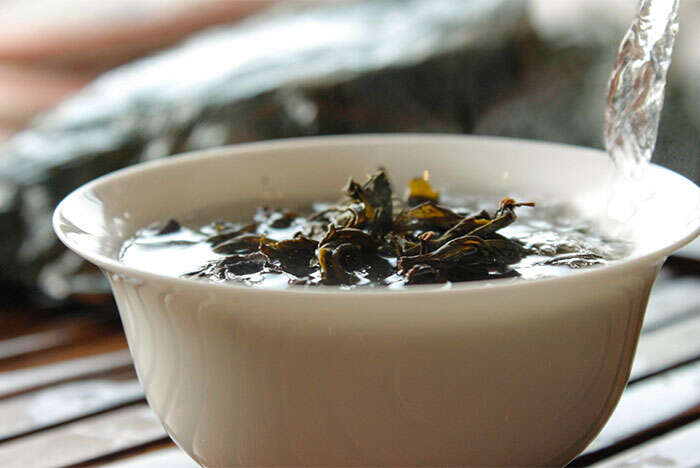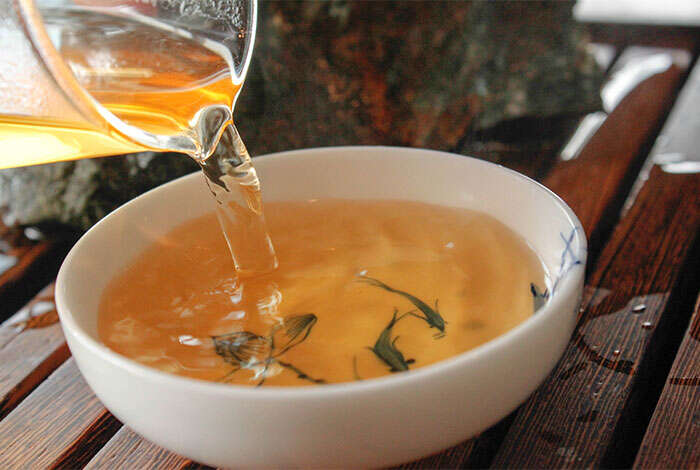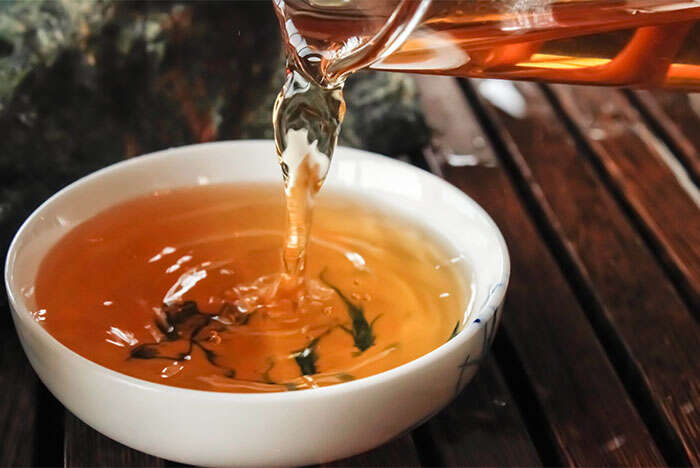Big Red Robe has captivated generations not only for its flavor, but for the rich legends that surround it. Like many of the origin stories of tea, Big Red Robe involves emperor, a dream, and a miraculous recovery. While many variations exist, the story most farmers we know tell starts with a dying empress.

The Dying Empress
In those days, the empress had grown up in the mountains of Wuyi in Fujian province before being taken to the imperial court to live out her days. Some say that she was afflicted with homesickness, longing for the rocky misty cliffs of Wuyi, but trapped in a cage of jewels and silks. She began to fade, getting weaker and weaker. The emperor loved her deeply and couldn’t bear to let her go. He called all the greatest doctors of China, who tried their healing arts, preparing remedies from the rarest of herbs. Nothing changed the empress’ state. All that the emperor could do was issue a proclamation across the land begging any who had a cure to come to the imperial city, promising riches.

The Pious Farmer’s Dream
Far away in the mountains of Wuyi in Xing Village, a pious farmer heard the proclamation and felt sadness in his heart. He would do anything for the empress, who was almost a folk hero for the local villagers who heard stories of her time in Wuyi. That night, a goddess – perhaps even Guanyin herself – came to him in a dream and revealed the cure: twisted bushes growing off the side of a great cliff. The farmer braved the elements and scaled the cliff wall to pick the tea leaves from these rugged plants.

The Empress Cured
The farmer sent the leaves with a messenger to the empress. Desperate, the emperor agreed to let the doctors steep up a medicinal brew from the leaves and feed it to the empress. As soon as the tea touched her lips, she awoke and began to regain strength. The rugged and humble flavor of the leaves reminded her of home and restored her spirits.

Red Robes of Gratitude & Nobility
The emperor sent the symbolic red robes of nobility to the farmer who saved his wife, granting him land and status. In gratitude, the farmer named the tea Big Red Robe, and continued to climb the cliff each year to pick tea for the empress to remind her of their shared home in the Wuyi Mountains.

Some people even say that all oolongs originated with Big Red Robe and the tea of Wuyi, as the word oolong translates to dark dragon. This could either be a reference to the dark curled shape of the leaves that is distinct to Big Red Robe, or a reference to a specific precipice of the Wuyi mountains that was named Wulong because it was shaped like a dragon.

For Emperors, Visiting Kings and Presidents
The original bushes still grow off the cliffs of Wuyi. They are considered a national treasure, part of China’s cultural heritage. Occasionally, to commemorate an important event, tea is still harvested from the bushes and made into oolong by the great masters of Fujian. It is usually reserved for high-up government officials, and as gifts for dignitaries. In fact, the Chinese tea farmers still speak with indignation of President Nixon, who was given a small canister of real Big Red Robe, but did not seem to understand its importance.

The high-end Big Red Robes of China are closely related to the original bushes, since they were created by grafting clippings of the real bushes onto nearby tea bushes growing on the cliffs of Wuyi. This rare tea is still hand picked by family farmers and tea masters like the Li Family in Xing Village, and still benefits from the rocky soil and misty air of Wuyi, but is available in quantities large enough to sell. It is difficult to find authentic Big Red Robe that is exported from China. Usually what makes it out of China is tea from the surrounding regions grown on level plantations, processed to look and taste similar to the real thing. There is nothing wrong with this, but the complexity of flavor is diminished whenever you cultivate a tea without biodiversity. The best teas are wild-crafted because they have the most exposure to other plants, and the most balanced soil.



 How To
How To Myths & Legends
Myths & Legends Travelogue
Travelogue Tasting Journal
Tasting Journal Talking Shop
Talking Shop Tea 101
Tea 101 Watch
Watch Teaware
Teaware News
News

Leave a Reply
I tried this tea from another website and it was wwwaayyy to floral for me
I hope you get to try the new harvest from the Li Family! While there is a floral element to the brew, it's balanced by a great juicy mouth-feel and that great roasty-toasty caramel coziness that's made the world fall in love with Big Red Robe.
I am now curious to try big red robe.
I hope you get to try Big Red Robe soon, JD! The world of Roasted Wuyi Oolongs is wide and wonderful, with varietals from the classic Big Red Robe (Da Hong Pao) to the floral and aromatic Qilan and Shui Xian, to the more roasted, smokey, masculine Tie Luo Han. If you're just starting out, try a classic Big Red Robe like the one we source directly from the Li Family, and branch out from their according to your own tastes and preferences.
http://verdanttea.com/teas/wuyi-mountain-big-red-robe/
Have fun, and happy sipping!
When will you have big red robe back in stock again?
Hi Jim - my apologies for the late reply :) Big Red Robe from the Li Family is in stock now!
http://verdanttea.com/teas/wuyi-mountain-big-red-robe/
This is my favorite tea EVER. i've been making my way through the tea world for about three years now, and I still haven't tasted a tea that has left such an impression on me as this specific Big Red Robe. To me it has the aroma of a big juicy, earthy peach (as weird as it sounds). Verdant Tea's Big Red Robe has to be in stock in my tea collection at all times. If you haven't tried this tea, you're missing out because it is stunning.
Thank you, Alicja! I know just what you mean about the juicy, earthy peach. I've always tasting stone-fruit in Wuyi oolongs, and the Big Red Robe from the Li Family is no exception. The way the aftertaste lingers, I think peach is a very fitting description.
Thank you again for your kind words, and for all of your support! We plan to keep this in stock for you always, through every season :) As long as we're lucky enough to keep working with Li Xiangxi and her family in Wuyi.
All my best,
Lily
I loved this tea in my sampler. Since it is out of stock can anyone recommend something similar?
I also received a sample, and am amazed by the complexity of flavors in Big Red Robe. Will there more in stock before the end of the calendar year? All good things take time, but I thought I'd check! Thank you!
Hello Melissa!
I am so glad you enjoyed the sample of Big Red Robe :) While the 2016 harvest that you tried is now sold out for the year, we do have the 2017 harvest from the Li Family on the way! Look out for that in the next month or so. We'll be sure to share it's arrival through our weekly mailer, as well as on social media.
I just received a sample of this tea and I must say it's absolutely amazing! I really really like this tea. I just signed up for the Tea of the Month Club and hopefully will receive more of this tea in the future :)